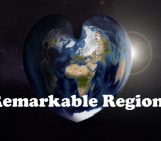
Every week, The Sassy Scientist answers a question on geodynamics, related topics, academic life, the universe or anything in between with a healthy dose of sarcasm. Do you have a question for The Sassy Scientist? Submit your question here.
Senna asks:
I’m torn between mantle dynamics and lithosphere dynamics as a research topic. Which shall I choose?
Dear Senna,
This is an easy one: mantle dynamics. Don’t you want to be part of cutting edge research, utilising state-of-the-art numerical modelling codes and high performance computing facilities? You can employ every solid rock rheology known to man and generate new lithosphere through volcanism. Nowadays the lithosphere and crustal layers are implemented so convincingly that we can easily match seismic tomography slices, passive margin architectures and even subduction zones to the scale of accretionary wedges. Inherited weak zones can lead to supercontinent cycles. The sky is the limit!
I am the first to admit that mantle convection has been overshadowed for quite a while by plate tectonic theory ever since the early days of Holmes (1931). Wilson’s (1965) tessellation of the Earth’s surface and the straightforward connection to relative plate motions (e.g., McKenzie and Parker 1967) and mid-ocean magnetic anomalies (Vine and Matthews 1963) resulted in a longstanding main focus on lithosphere dynamics (Forsyth and Uyeda 1975). Even though early work, by for example Morgan (1971), showed that simplified systematic mantle convection explained first-order observations as well, it took quite a while before mantle convection became more popular. To be clear, researchers from several fields studying the mantle didn’t help very much: lingering discussions on whole mantle convection vs. separate flow cells, whether slabs or plumes can penetrate the 660 km boundary, and problems with incorporating a realistic lithosphere with proper rheologies that produced surface deformation predictions similar to the actual Earth’s surface held back widespread acceptance that mantle convection can explain everything. Nowadays, computational prowess and numerical model sophistication is at a point where we have overcome these issues: once again, the lithosphere is simply the thermal boundary layer of the mantle convection system.
Yes, the lithosphere is tessellated and undergoes continuous reorganisation — we can model this with mantle convection. Yes, there are probably thermo-chemical piles in the lower mantle — we can incorporate these. Yes, we infer that India has moved faster than any continent does at present — just add a mantle convection cell. Yes, the surface has topography that we can’t explain with isostasy and flexure — it is induced by radial mantle flow. I’m forgetting other issues here, obviously. The point is: studying lithosphere dynamics is going to be an obsolete exercise in a couple of years. Join the mantle convection party and be prepared for the future!
Yours truly,
The Sassy Scientist
PS: This post was written after reading quite a bunch of lithosphere dynamics papers trying to explain surface observations without using the mantle!
References: Forsyth, D.W. and Uyeda, S. (1975), On the relative importance of the driving forces of plate motion, Geophys. J. R. astr. Soc., 43, 163–200 Holmes, A. (1931), Radioactivity and Earth movements, Transactions of the Geological Society of Glasgow, Geological Society of Glasgow: 559–606 McKenzie, D., and R. L. Parker (1967), The North Pacific: An example of tectonics on a sphere, Nature, 216, 1276 Morgan, W. J. (1971). Convection Plumes in the Lower Mantle. Nature, 230, 42-43, http://dx.doi.org/10.1038/230042a0 Vine, F. J., and P.M. Matthews (1963), Magnetic anomalies over ocean ridges, Nature, 199, 947 Wilson, J. T. (1965), A new class of faults and their bearing on continental drift, Nature, 207, 343


